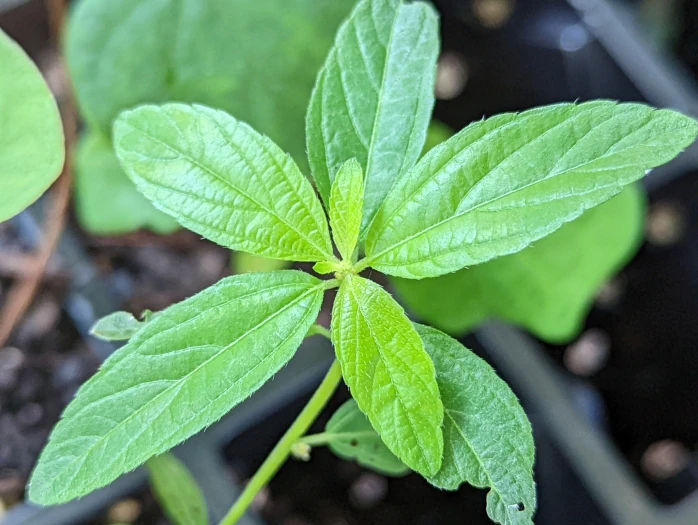Slender Threeseed Mercury
(Acalypha gracilens)
Slender Threeseed Mercury (Acalypha gracilens)
/
/

© Alison Northup
CC BY 4.0
Image By:
© Alison Northup
Recorded By:
Copyright:
CC BY 4.0
Copyright Notice:
Photo by: © Alison Northup | License Type: CC BY 4.0 | License URL: http://creativecommons.org/licenses/by/4.0/ | Uploader: alisonnorthup | Publisher: iNaturalist |
























Estimated Native Range
Climate Requirements
| • Precipitation | 25" - 73" |
| • High Temp. | 77°F - 97°F |
| • Low Temp. | 4°F - 59°F |
Summary
Acalypha gracilens, commonly known as Slender Threeseed Mercury or Shortstalk Copperleaf, is an annual herb native to a variety of habitats in the southeastern United States, including open woodlands, forest edges, and disturbed areas such as roadsides and fields. It is particularly common in frequently burned pine communities and coastal plains. This plant typically grows up to 3 feet in height and features pubescent stems with elliptic to lanceolate leaves that can add a textured greenery to garden settings.
Slender Threeseed Mercury is valued for its adaptability to various soil types, provided they are well-drained. It prefers full sun to part shade and is drought-tolerant once established, making it a low-maintenance option for gardeners. The plant produces inconspicuous flowers from spring to late frost, with separate male and female flowers on axillary spikes. The flowers are not particularly showy, but the plant’s ability to flower throughout the year in southern Florida can provide consistent greenery. It is often used in restoration projects and as a filler in garden beds. The seeds are dispersed by an explosive mechanism or by ants, which can contribute to its spread. While not typically problematic, its seed dispersal methods can lead to self-seeding in gardens, which may require management.CC BY-SA 4.0
Slender Threeseed Mercury is valued for its adaptability to various soil types, provided they are well-drained. It prefers full sun to part shade and is drought-tolerant once established, making it a low-maintenance option for gardeners. The plant produces inconspicuous flowers from spring to late frost, with separate male and female flowers on axillary spikes. The flowers are not particularly showy, but the plant’s ability to flower throughout the year in southern Florida can provide consistent greenery. It is often used in restoration projects and as a filler in garden beds. The seeds are dispersed by an explosive mechanism or by ants, which can contribute to its spread. While not typically problematic, its seed dispersal methods can lead to self-seeding in gardens, which may require management.CC BY-SA 4.0
Plant Description
- Plant Type: Herb
- Height: 1-3 feet
- Width: 1-3 feet
- Growth Rate: Moderate
- Flower Color: Red, Yellow
- Flowering Season: Spring, Summer, Fall
- Leaf Retention:
Growth Requirements
- Sun: Full Sun, Part Shade
- Water: Medium
- Drainage: Fast
Common Uses
Drought Tolerant, Erosion Control, Low Maintenance
Natural Habitat
Native to open woodlands, forest edges, disturbed areas, and particularly common in frequently burned pine communities and coastal plains
Other Names
Common Names: Slender Threeseed Mercury, Yerba de Cancer, Short-Stalked Copperleaf
Scientific Names: Acalypha gracilens, Acalypha gracilens var. delzii, Acalypha gracilens var. fraseri, Acalypha gracilens var. gracilens, Acalypha virginica, Acalypha virginica var. fraseri, Acalypha virginica var. gracilens, Acalypha virginica var. gracilens, Acalypha virginica var. gracilescens
GBIF Accepted Name: Acalypha gracilens